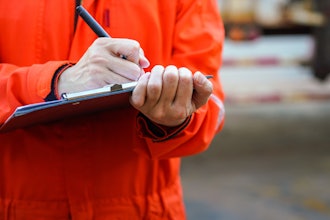Scientists have discovered how to find out where Atlantic salmon spend their time at sea by analysing the chemistry of their scales, in a breakthrough that may help preserve dwindling populations.
It turns out that fish from different parts of the UK migrate to very different stretches of ocean. Salmon spend much of their adult lives at sea, before returning to breed in the rivers where they were spawned. But until now it's been unclear precisely where they go at sea.
It's an important question, because their numbers have been falling since the early 1970s, mostly because of losses at sea. In that decade, around 70 per cent of each generation died at sea, whereas in 2005 the mortality rate had risen to 90 per cent. This suggests it might be a good idea to protect them at sea. But where, exactly?
'We can now see where fish from individual rivers go to feed in the Atlantic'
Dr Kirsteen MacKenzie
Now researchers have found the answer, by analysing the ratios between different forms of carbon, known as isotopes, in salmon scales. These form a distinctive chemical signature that can trace each salmon to the feeding grounds of its youth.
The team of scientists from the University of Southampton, the Centre for Environment, Fisheries and Aquaculture Science, the Game and Wildlife Conservation Trust and the National Oceanography Centre in Southampton looked at collections of preserved salmon scales taken from two salmon populations - one returning to rivers on the UK's north-east coast, the other coming back to the River Frome in Dorset.
They compared changes in the scales' isotopic signatures over time with satellite records of sea-surface temperatures from across the north Atlantic. Areas where changes in the records match up show where each population is feeding.
'As every single salmon contains the natural chemical tag, we can now see where fish from individual rivers go to feed in the Atlantic,' says Dr Kirsteen MacKenzie of the University of Southampton, lead author of the study, which appears in Scientific Reports. 'Interestingly, we found that salmon born in two areas of the British Isles swim to feeding grounds that are far apart, and experience very different conditions at sea.'
Salmon returning to rivers on the UK's north-east coast face far more variable conditions at sea, suggesting they feed in the Norwegian sea - roughly where scientists thought. But salmon returning to the River Frome in Dorset turn out to feed further to the west, around the Faroe Islands and Iceland - this was much more surprising, according to co-author Dr Clive Trueman, also from the University of Southampton.
'The prevailing view was that the more northerly UK populations feed around the Norwegian Sea, while the more southerly ones feed off western Greenland,' he explains. 'But our analysis suggests salmon from the south of the UK aren't going as far west as that. Some fish may make it to Greenland, but if so they don't seem to be making it back to the UK.'
The proportion of different isotopes in an animal's body is determined by the different isotopes present in the food it ate as it grew, and this depends in turn on where it was at the time.
Each stretch of ocean carbon imparts a distinct isotopic signature to the animals feeding there, largely because its waters are a different temperature and host different plankton communities. Scales are relatively long-lasting and preserve a record of the fish's carbon intake over its last few months of feeding.
The north-eastern salmon face a more variable environment in the Norwegian Sea than the Frome population experiences near Iceland, suggesting their numbers may be more dependent on changing environmental conditions.
'This research will help protect small, vulnerable populations of fish,' Trueman says. 'If we know where they're going, we can look out for any changes in fishing practice that might be affecting their numbers.'
This is the first time scientists have had a firm idea where salmon go to feed at sea. Previous studies have tried to find out by tagging individual fish and seeing where they are caught. But so many salmon die on the way that you have to tag an unfeasibly large number of them to get a sensible result.
And you're only likely to catch fish where there's fishing going on, so this method is biased towards parts of the ocean that are actively exploited by the fishing industry or targeted by research vessels.
Trueman says that similar techniques could be used to identify the feeding grounds of other migratory marine animals, including turtles, tuna and cod, helping conservationists manage their numbers and identify the best sites for protected areas in which fishing is restricted.


















